The history and manufacturing process of Enshu cotton
made in hamamatsu Enshu cotton pongee woven on an old-fashioned loom
The Enshu region, located in western Shizuoka Prefecture, has flourished as a cotton-producing region since ancient times due to the abundant water of the Tenryu River and a warm climate. The history of Enshu Momen, a hand-woven cotton fabric started by cotton farmers as a side job, dates back to the mid-Edo period. During the Meiji and Liberal eras, sales channels expanded through the efforts of cotton merchants, and Enshu Momen became known throughout the country. With the invention of the shuttle loom by Sakichi Toyoda, a native of Enshu and the founder of the Toyota Group, the production of cotton textiles increased dramatically. Not only did the power loom revolutionize Japan's textile industry, but its textile machinery business later became the basis for the development of automobiles. The shuttle loom is the origin of Japan's proud technological prowess, and thanks to that technology, Enshu developed into a textile production area that was the first in the country to successfully industrialize textiles. Textiles and automobiles, completely different products, are connected by the same technology!
How Enshu Cotton Tsumugi is Made
The production of Enshu Momen is covered by division of labor. When many people think of textile manufacturing, they imagine weaving, but from the time the yarn is purchased to the time of weaving, there are a number of processes that go through as shown in the diagram below. There are specialized craftsmen for each process, and they work in separate factories, so it probably takes a lot more time and effort than you might think.

From now on, let's take a look at the work that you don't usually get to see.
Now, the journey of the thread begins.
1. Skeining
The raw yarn purchased from the manufacturer is made into a certain amount of skeins at a skein shop for dyeing and gluing. A skein refers to a thread that is tied together in a circle. The ends of the bundled threads are all handled by hand, taking care to ensure that the threads do not get tangled or come undone even when pulled too hard in later steps.
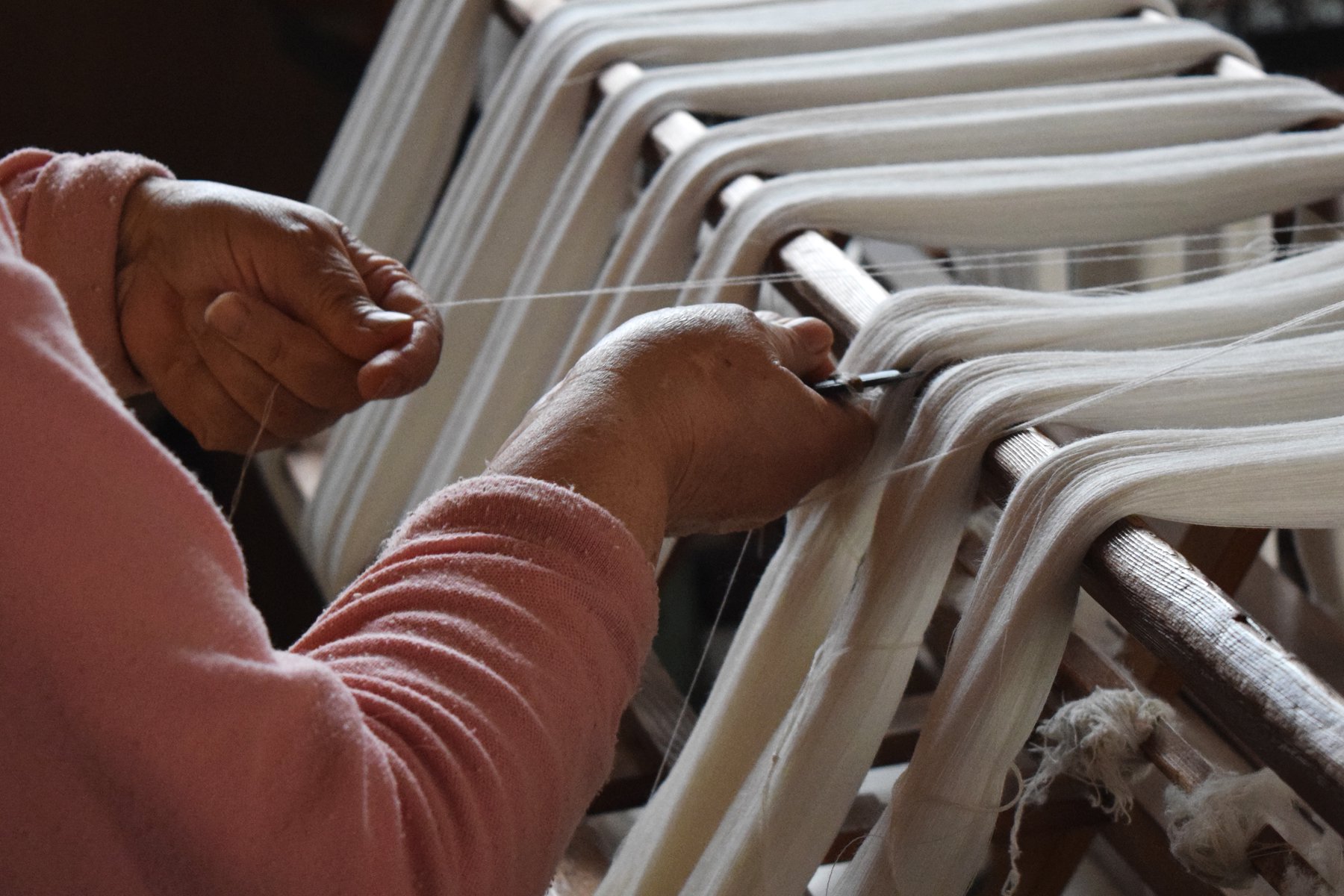
2. Refining and dyeing
The skeins are neatly tied together and sent to the dyer. Since cotton threads have impurities such as cotton stems and leaf residue attached to them, the skeins that arrive at the dyer are first washed in boiling water. This process is called refining, and by removing the oil and scum from the cotton and removing impurities, the thread is dyed with a strong color.
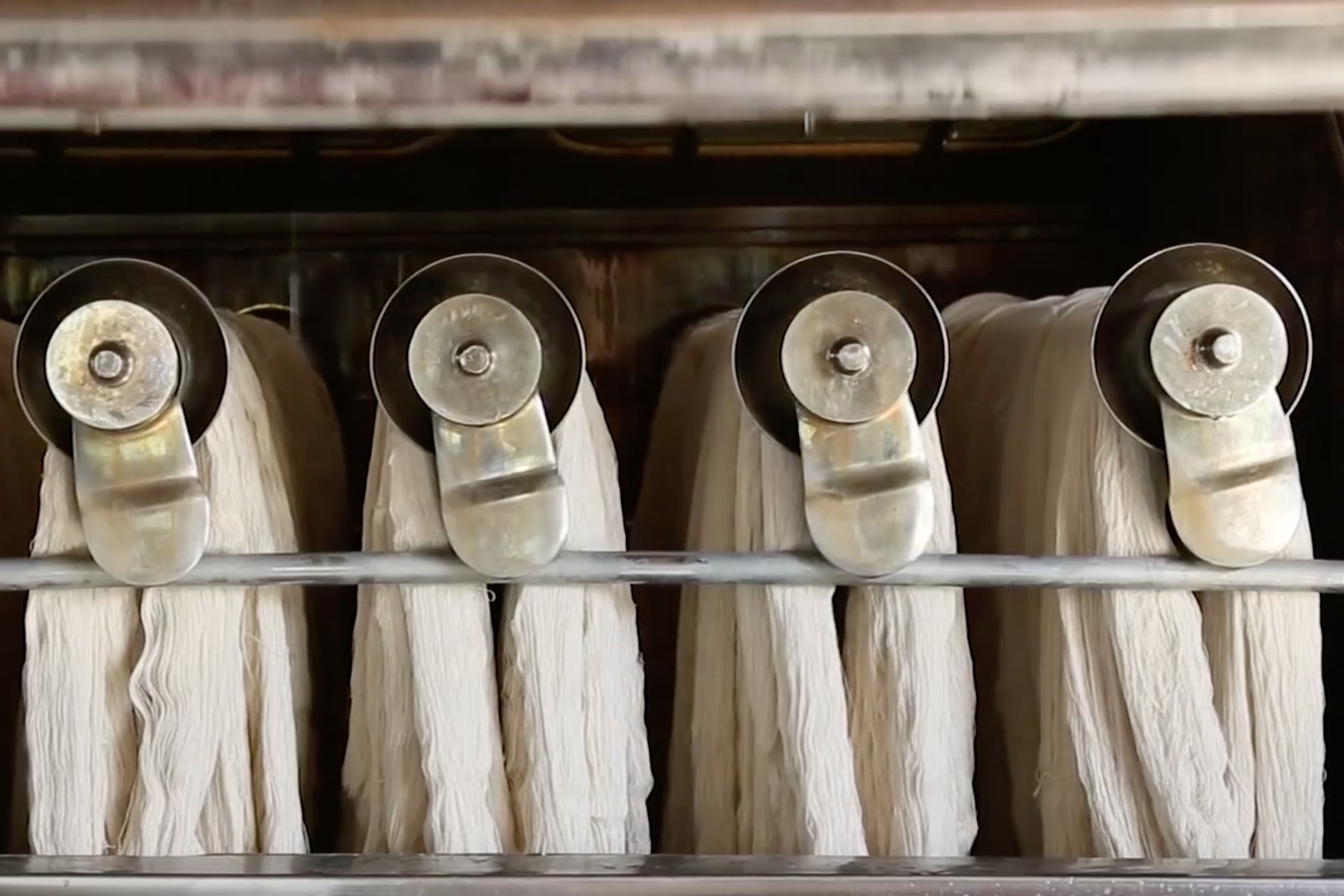
3. Gluing
During weaving, a sushi shop applies glue to the warp threads to prevent the threads from breaking or fuzzing due to friction. This glue has a huge impact on subsequent processes, affecting the quality of the product, so we mix several types of starch as raw materials each time, taking into consideration factors such as the type and amount of thread, and the weather.
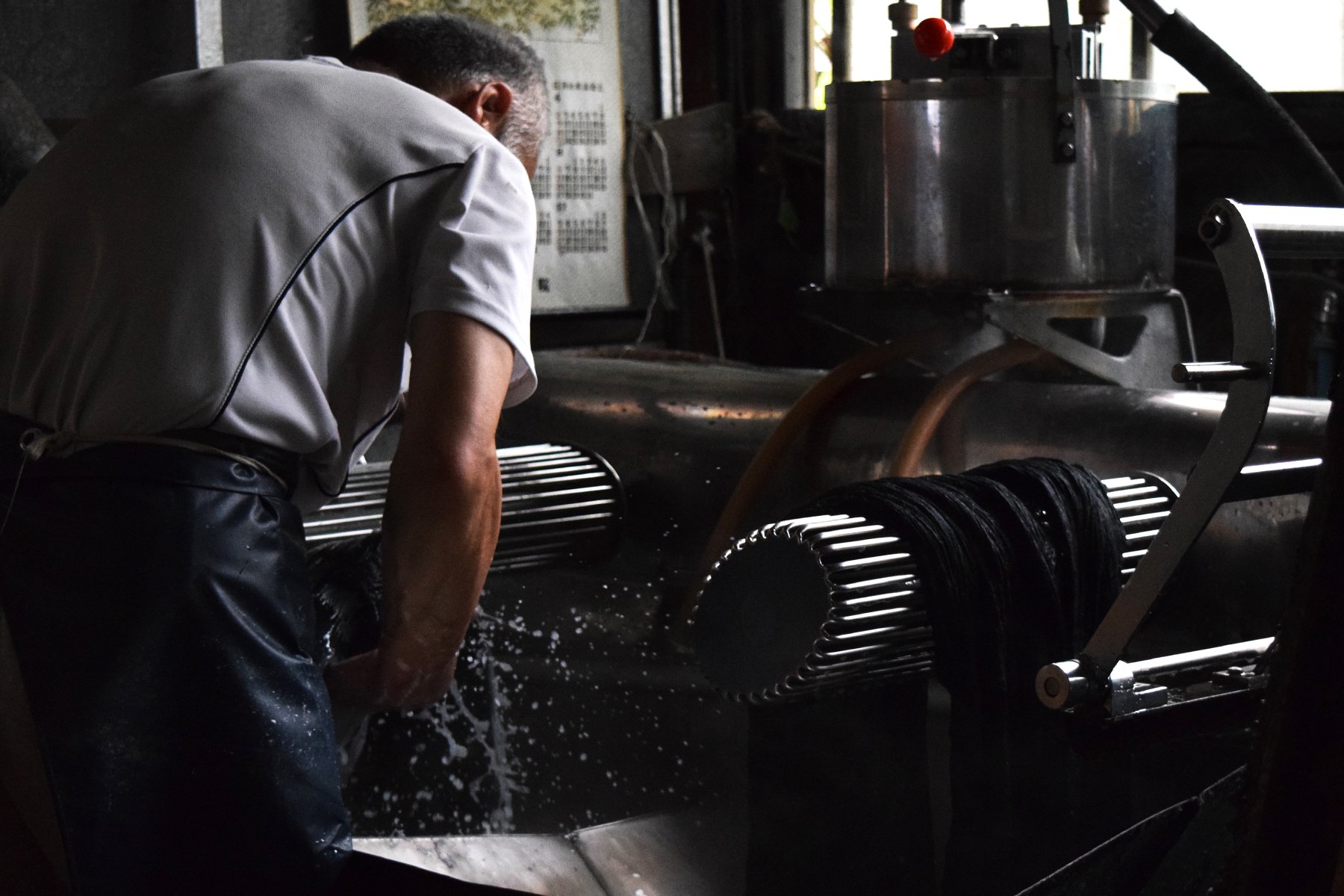
4. Tube winding
The glued skeins are taken to a pipe winding shop, where they are transformed into ``Imokuda.'' Once the retro machine starts rattling, it doesn't stop until all the tubes have been wound. At any given time, around 20 spider lilies are wound at the same time, keeping an eye on the entire thread so that it does not break.
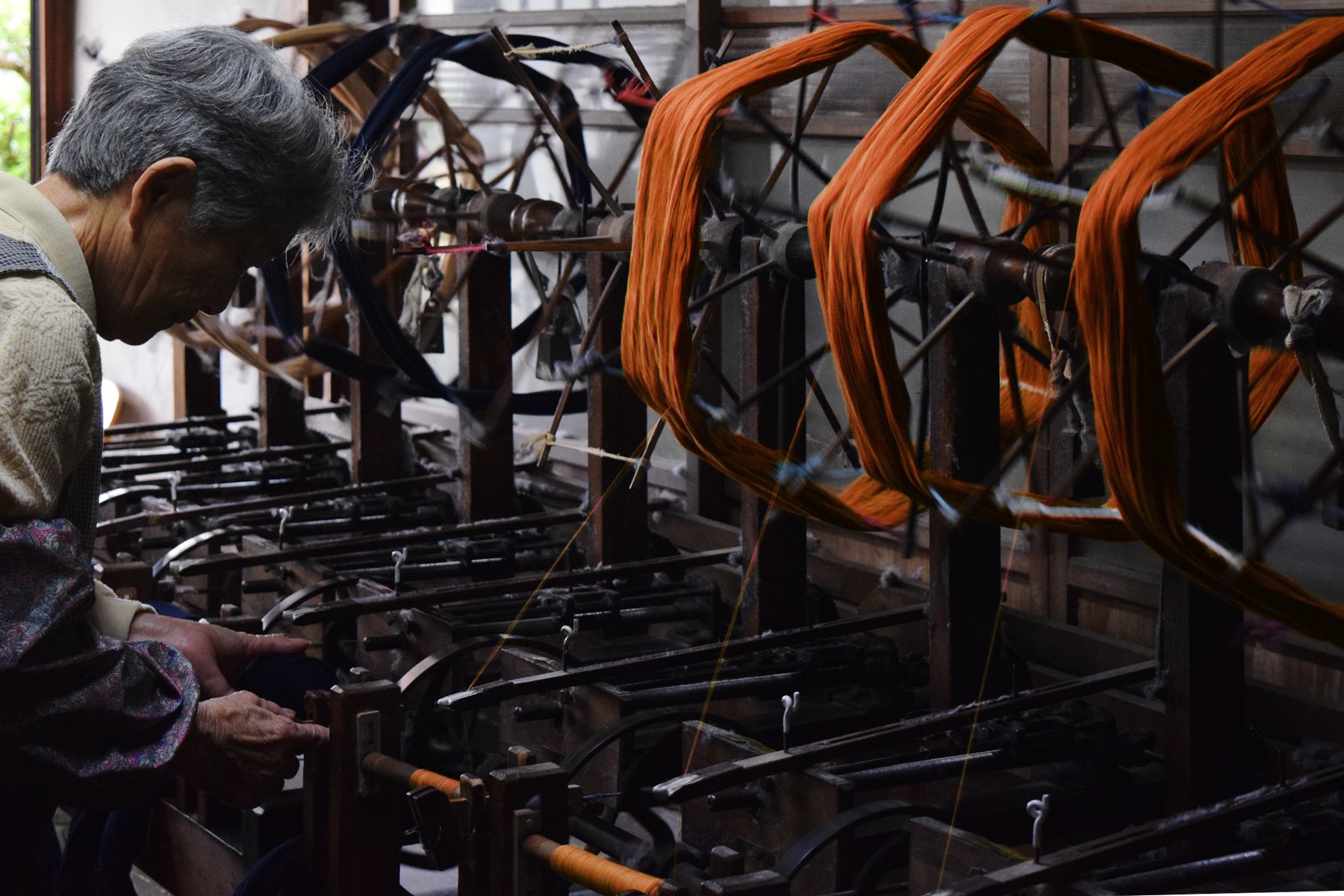
5. Warping
Warping is the process of properly aligning the warp threads. If you make a mistake in the order, the pattern will look strange, so the warper carefully places the potatoes based on a design that shows the arrangement of the threads. Once the thread that has been pulled out from the potato is wound up all at once by a machine, the process is finally nearing its final stage.
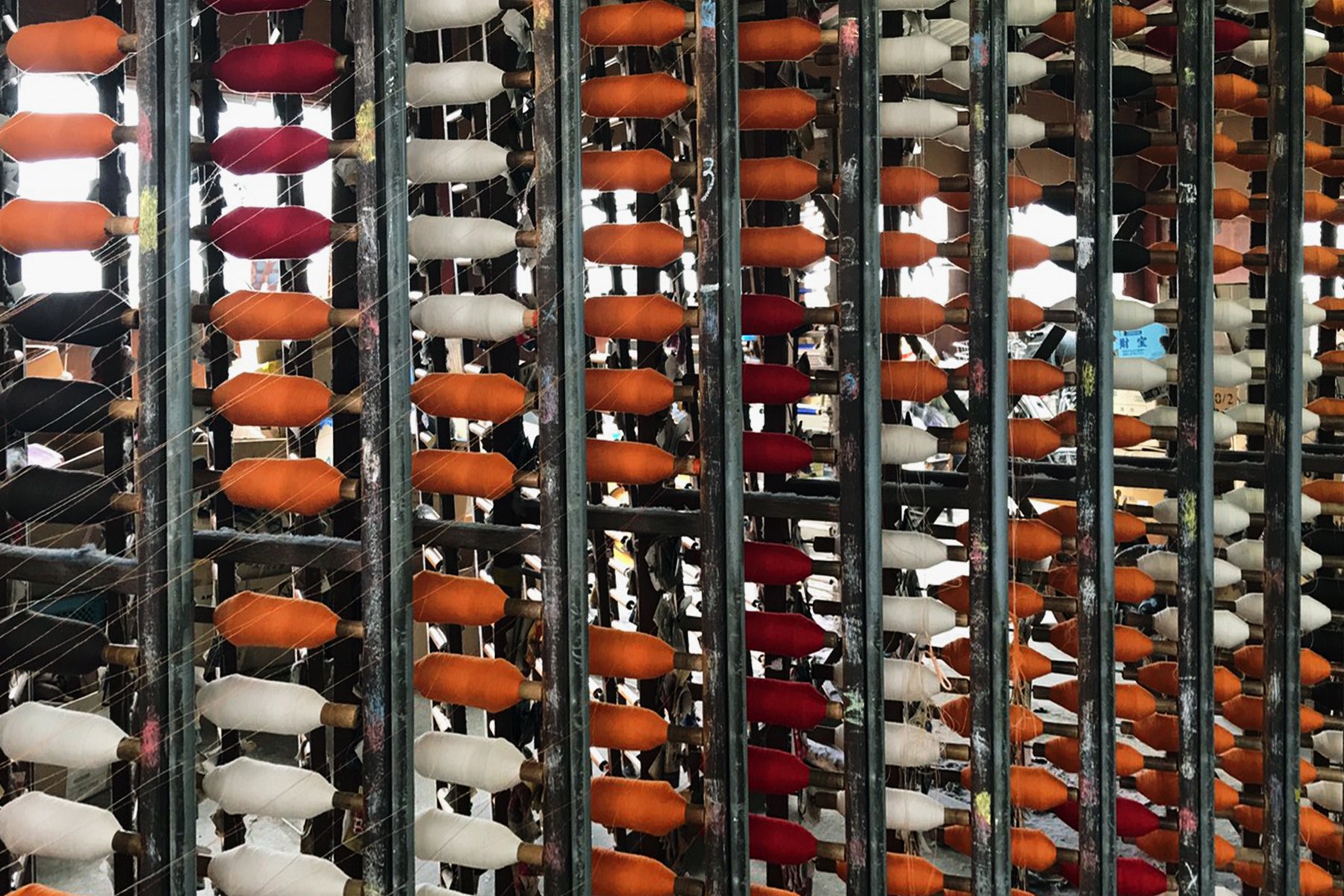
6. Hetooshi
Warp threading is the process of threading the warp threads one by one through the three parts: the dropper, the heddles, and the reed. If you thread the thread in the wrong place, you will damage the fabric, so mistakes are not an option. Enshu Momen has approximately 1,000 warp threads. After completing this laborious work, it's time to weave!
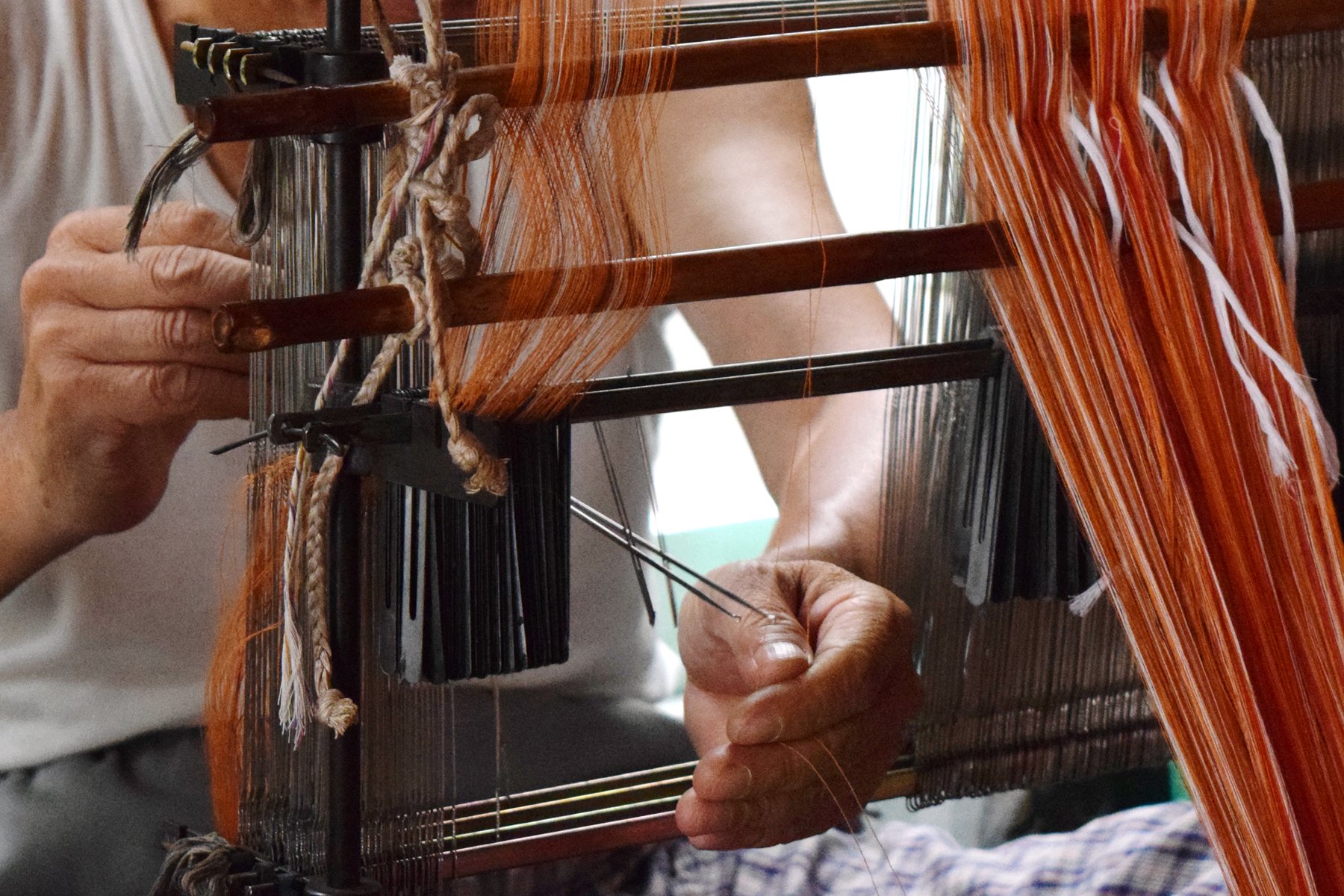
7. Weaving
The pure white thread arrived at Ikenuma Ori Studio in a different form. Once the finished warp threads are placed on the loom and the parts are attached to the designated locations, weaving can finally begin.

It takes about a month to weave all the warp threads wound around the beams, and during this time the conditions of the threads and loom change daily depending on the weather, so skilled workers constantly adjust the machines as they weave.
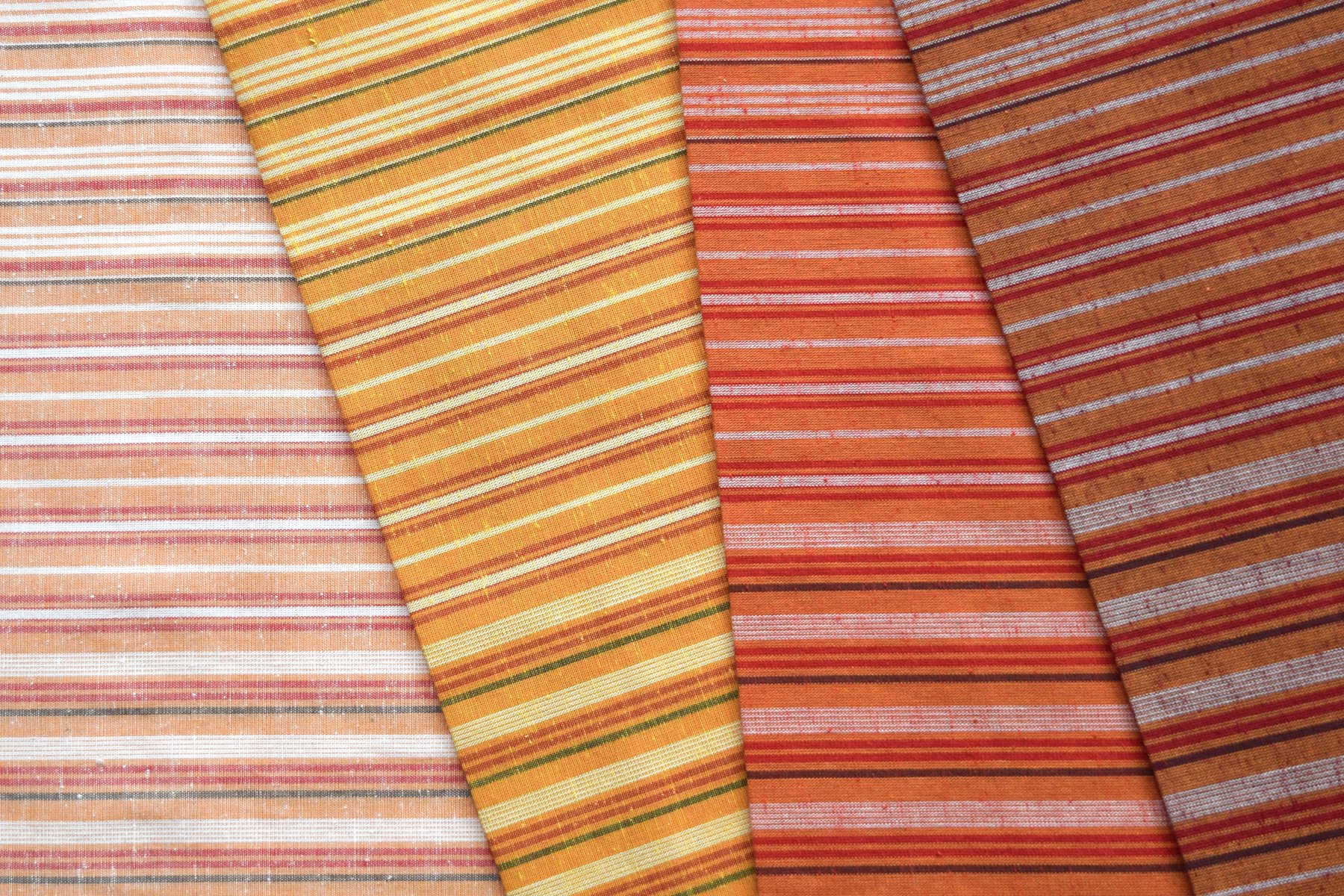
The pure white thread passed through the hands of many craftsmen and became the fabric. This time, it transforms into clothing and miscellaneous goods, and a new journey begins.
If you come across Enshu Momen somewhere, please use it with care.
From Ikenuma Ori Studio Chiori https://hatayachiori.shop-pro.jp/ COLUMN

Irohado
〒166-0004
1-17-21-2F Asagaya Minami, Suginami-ku, Tokyo
Business hours: 10:00-18:00
Closed: Wednesdays
This is the second floor of an apartment building in the Pearl shopping district, which stretches about 700 meters from the south exit of JR Asagaya Station to Toei Subway Minami Asagaya Station, two stations away. Akidai is across the street, and Hananomisemadoka is on the first floor. Our store's logo, a sign with a frog wearing a kimono, is a landmark.
